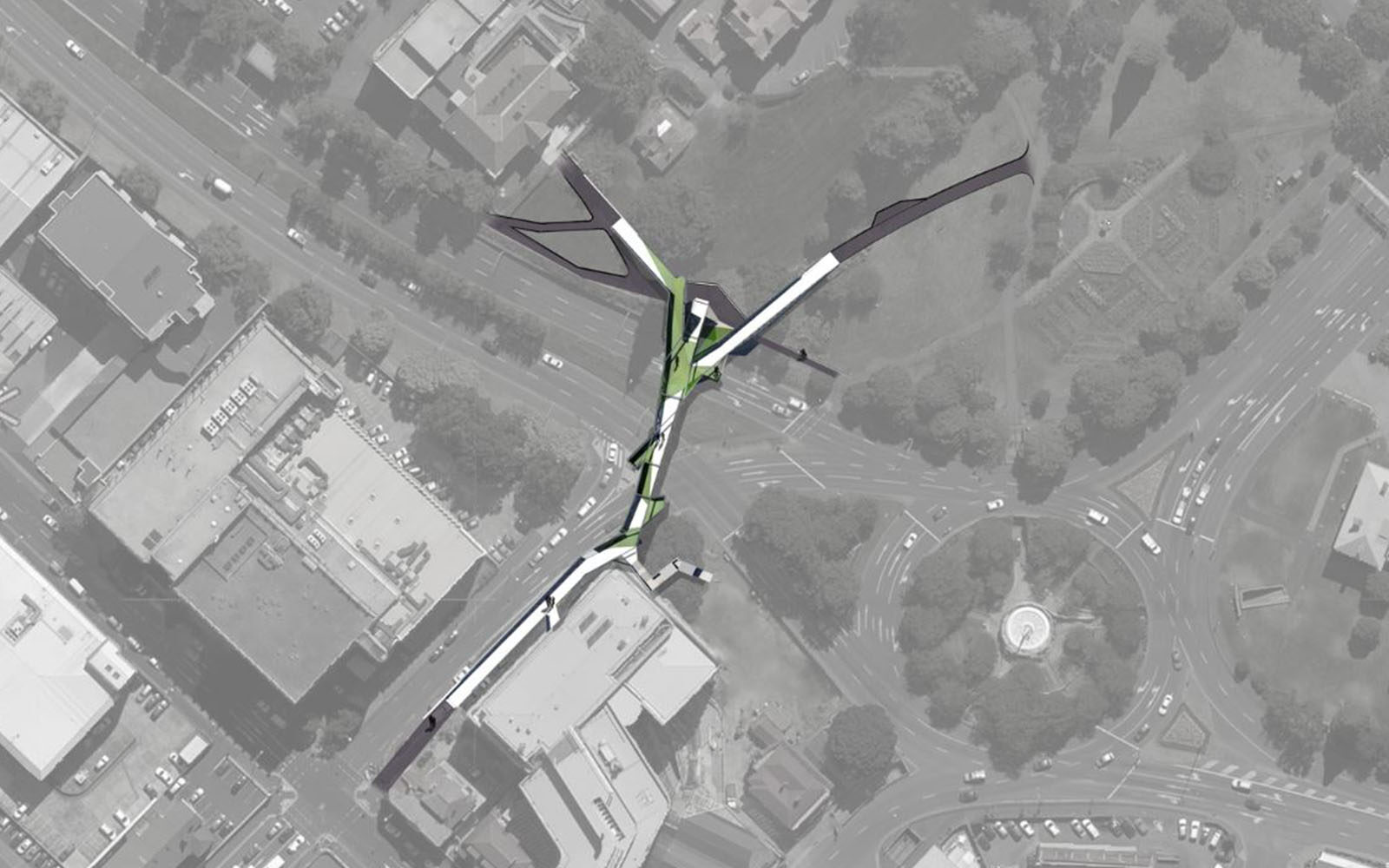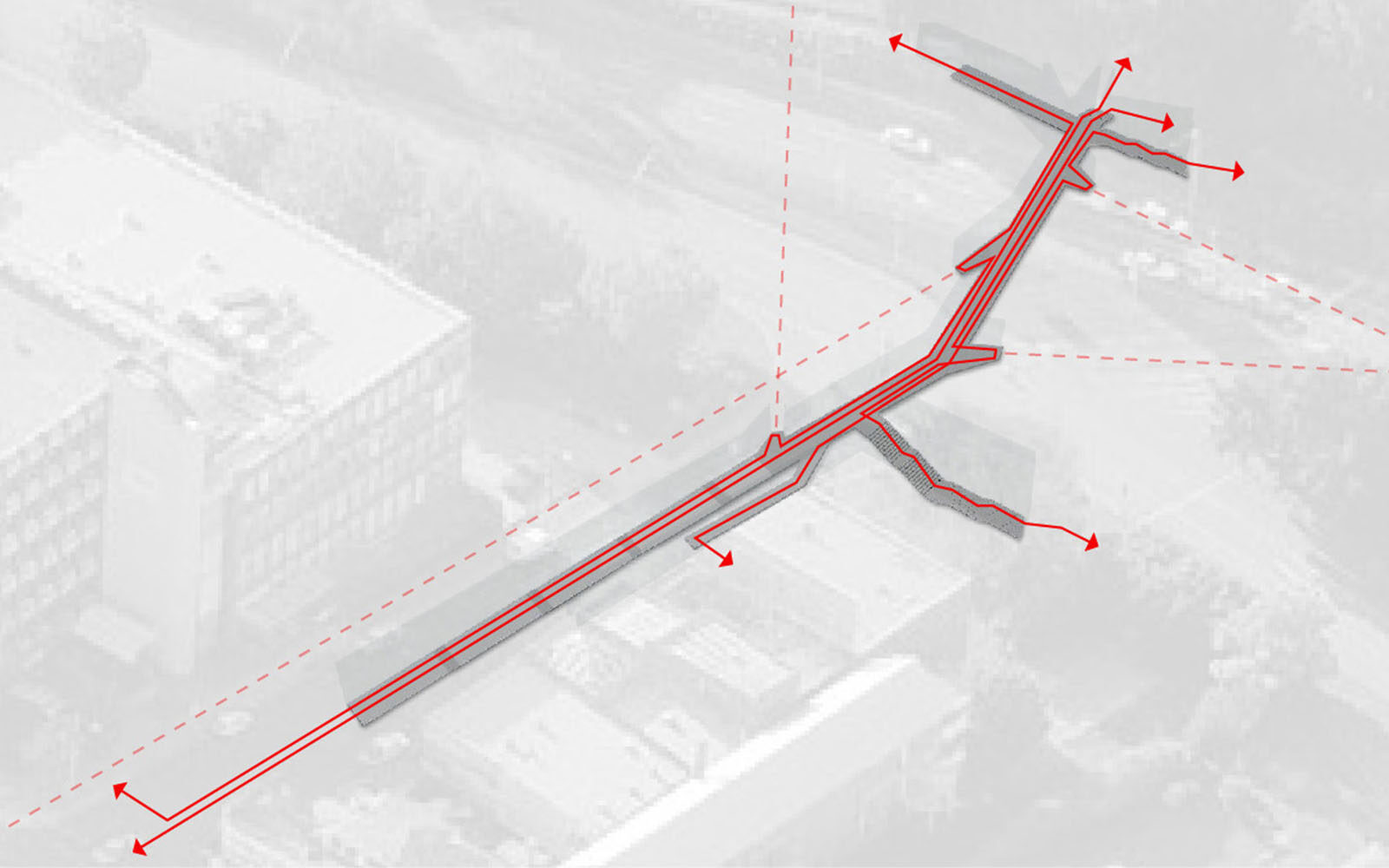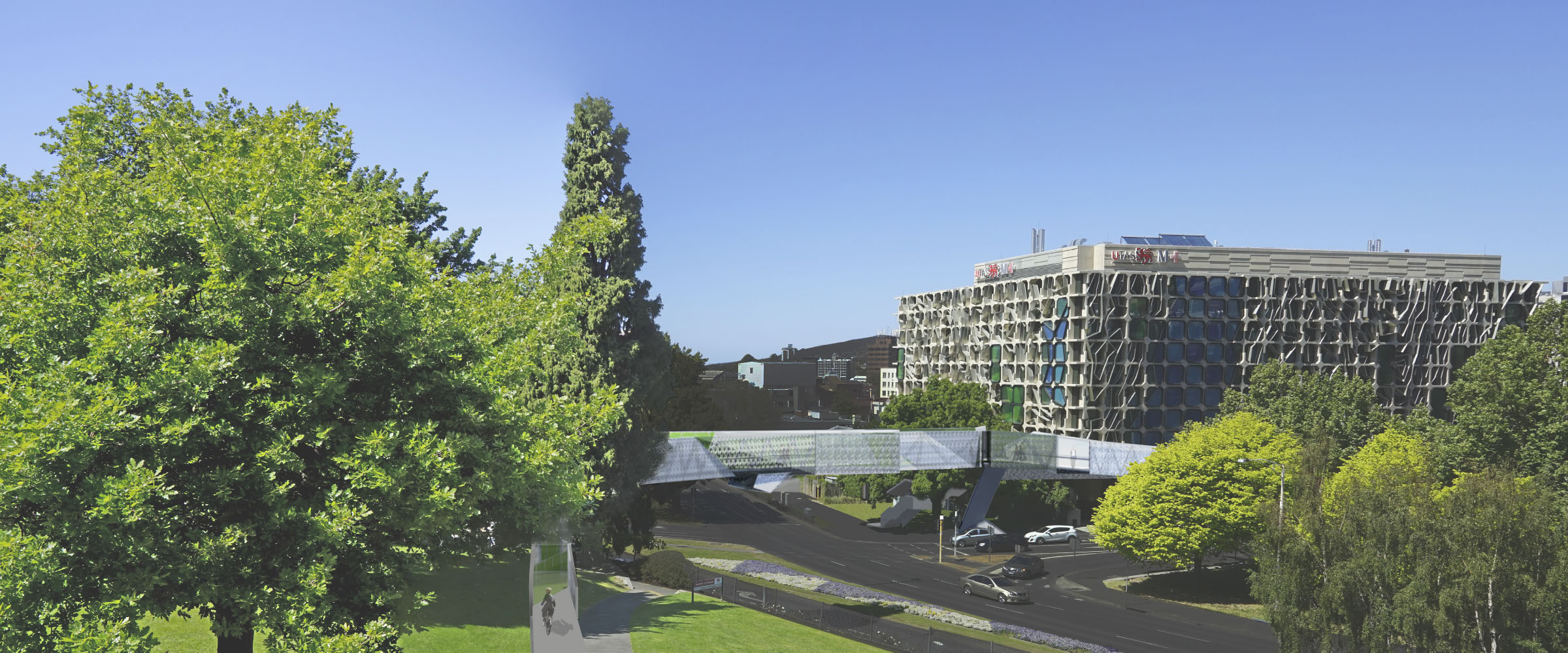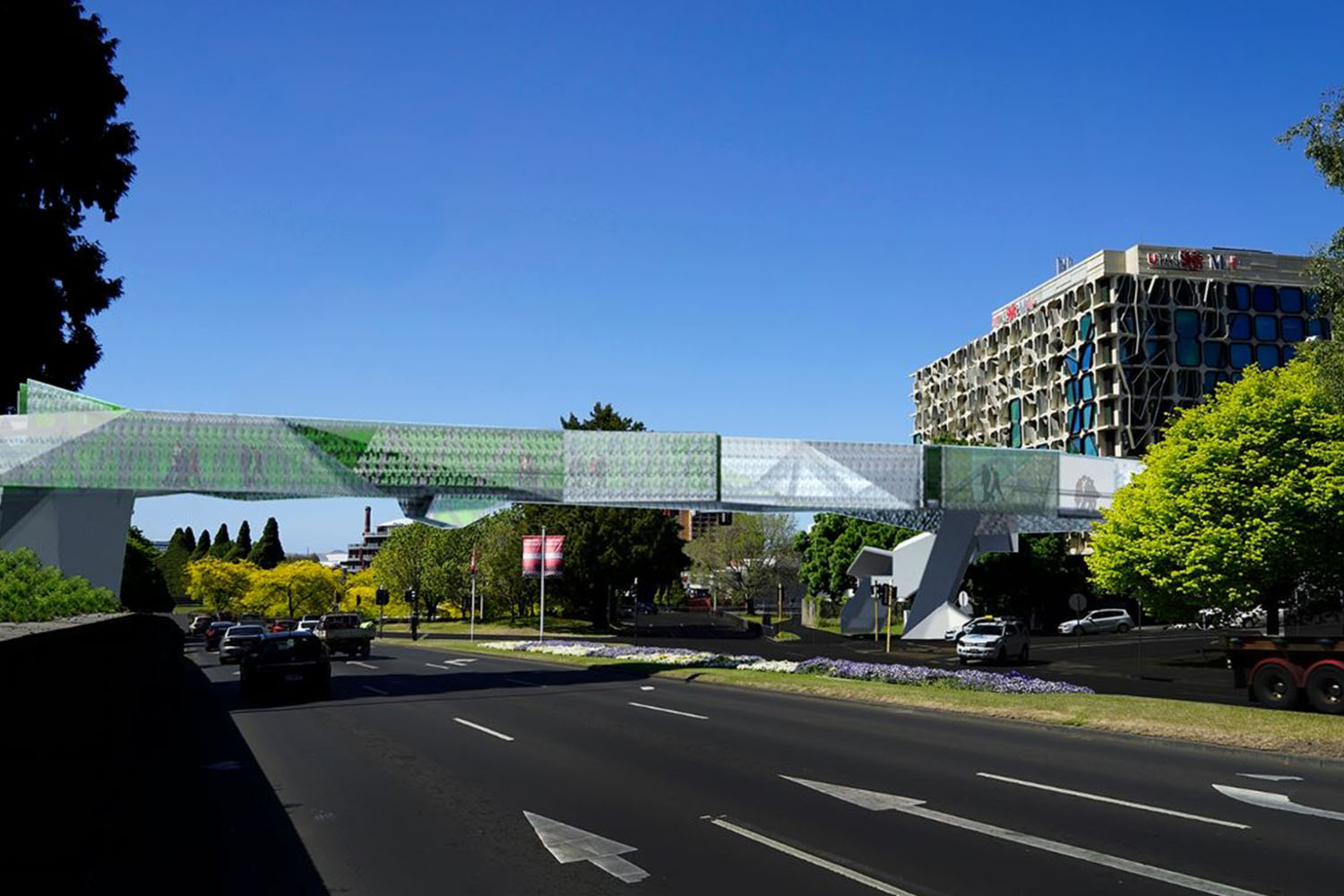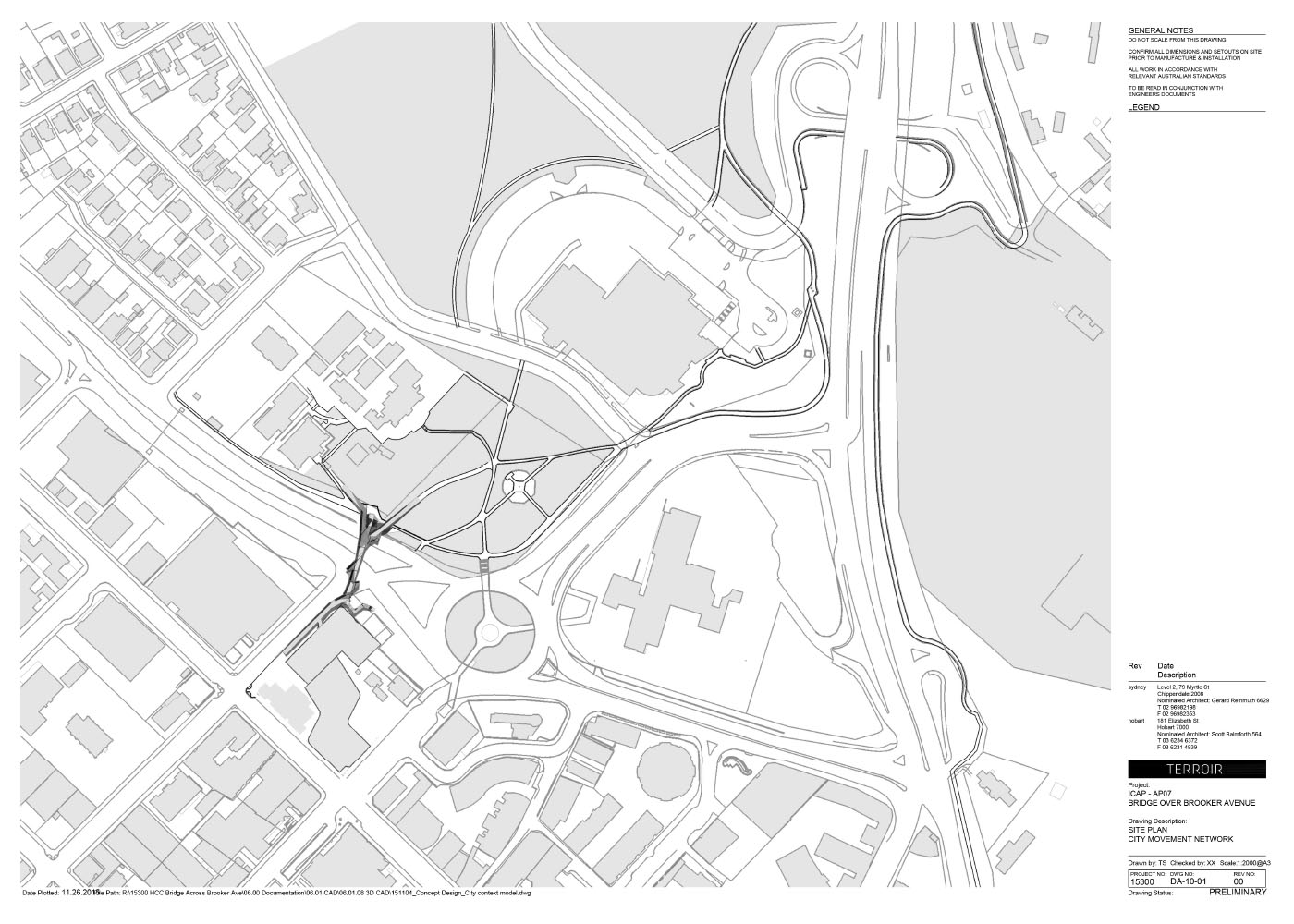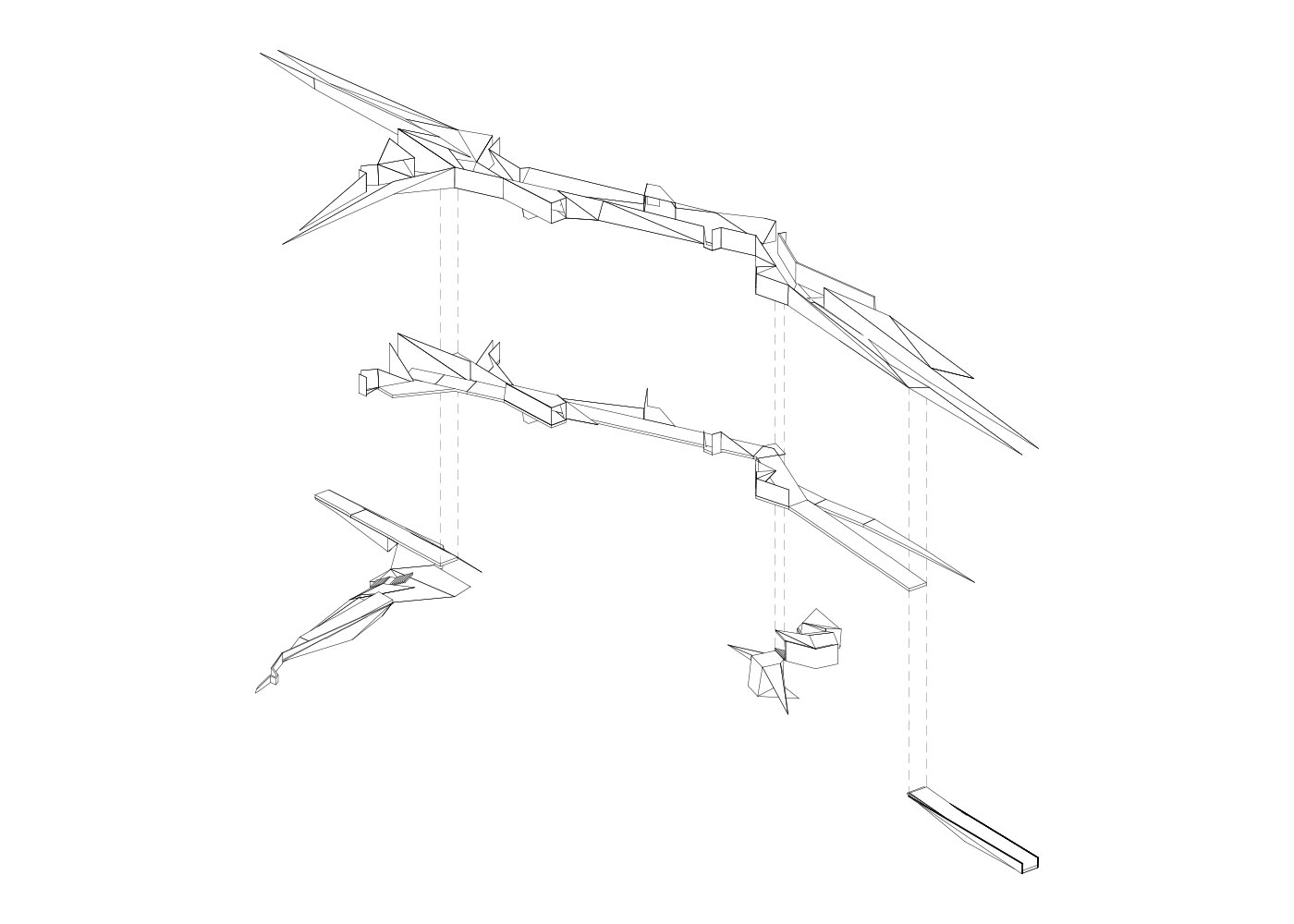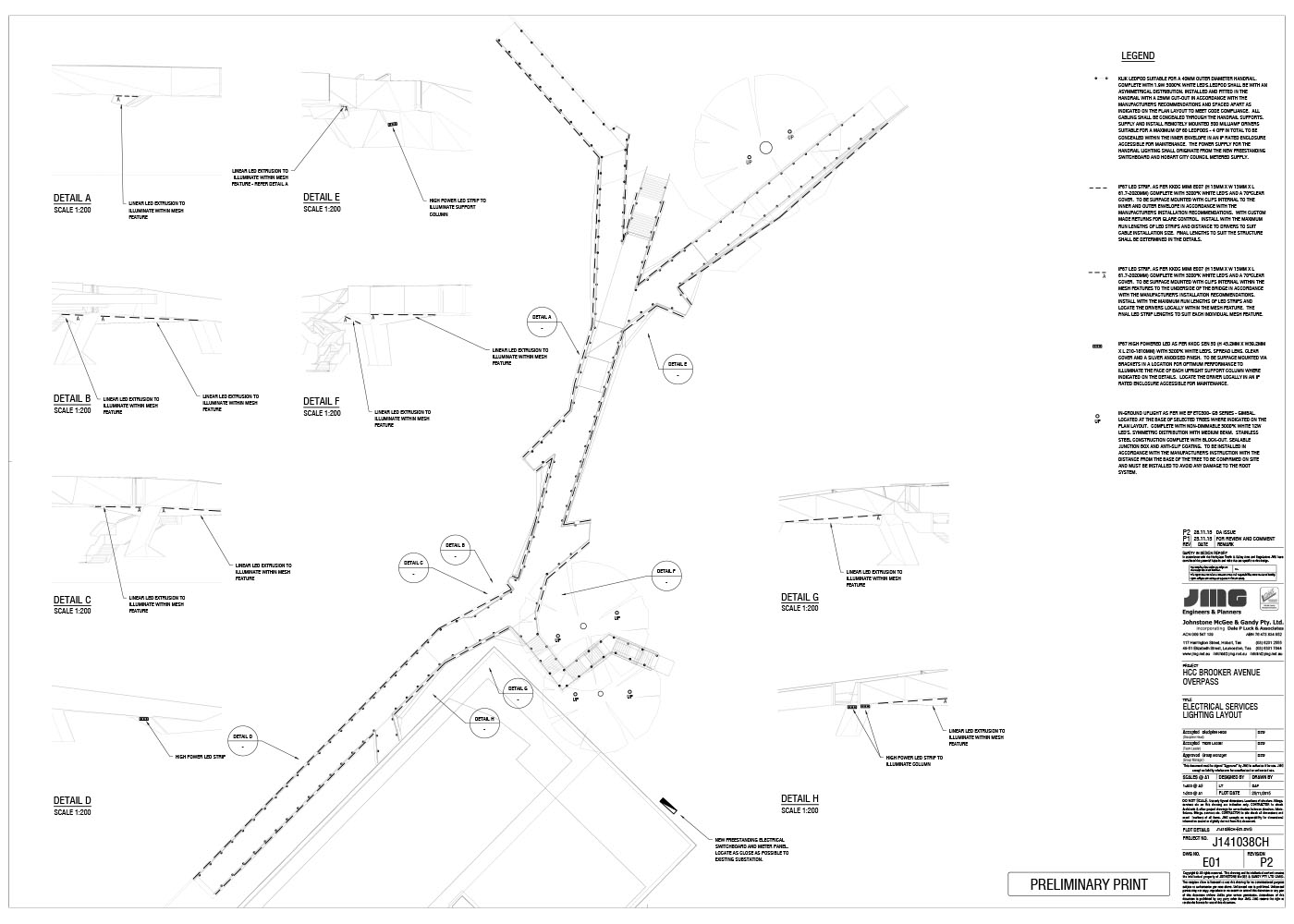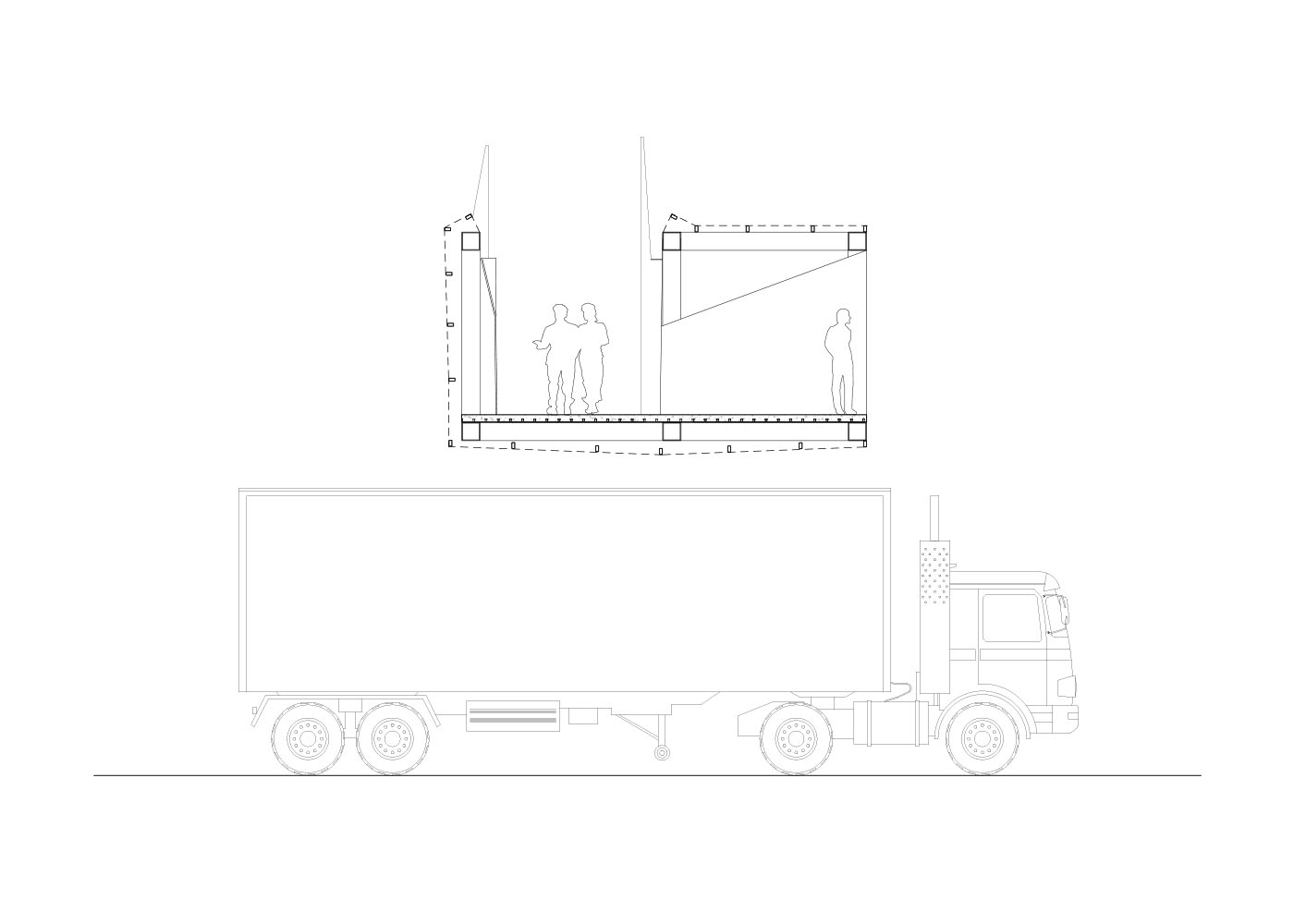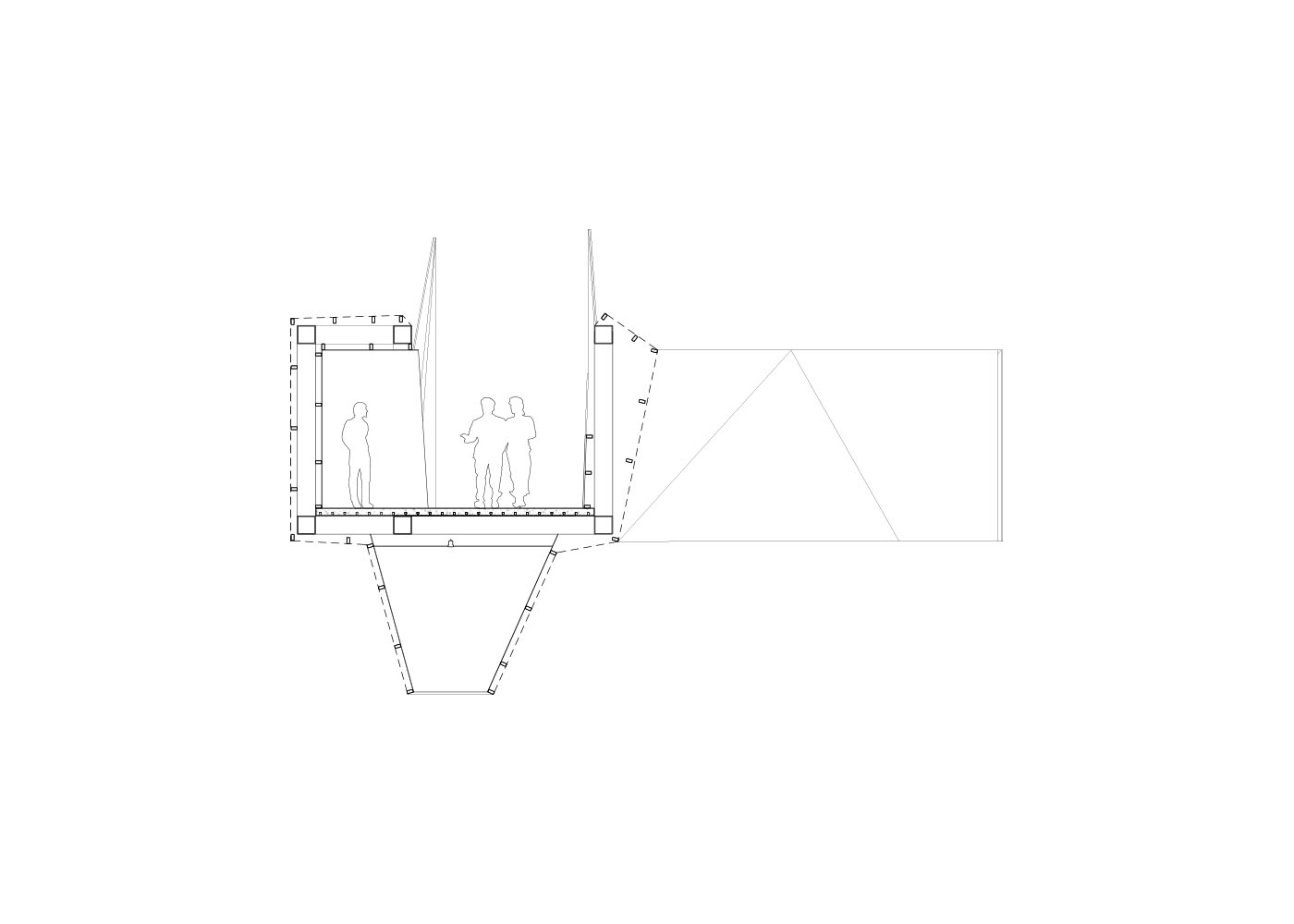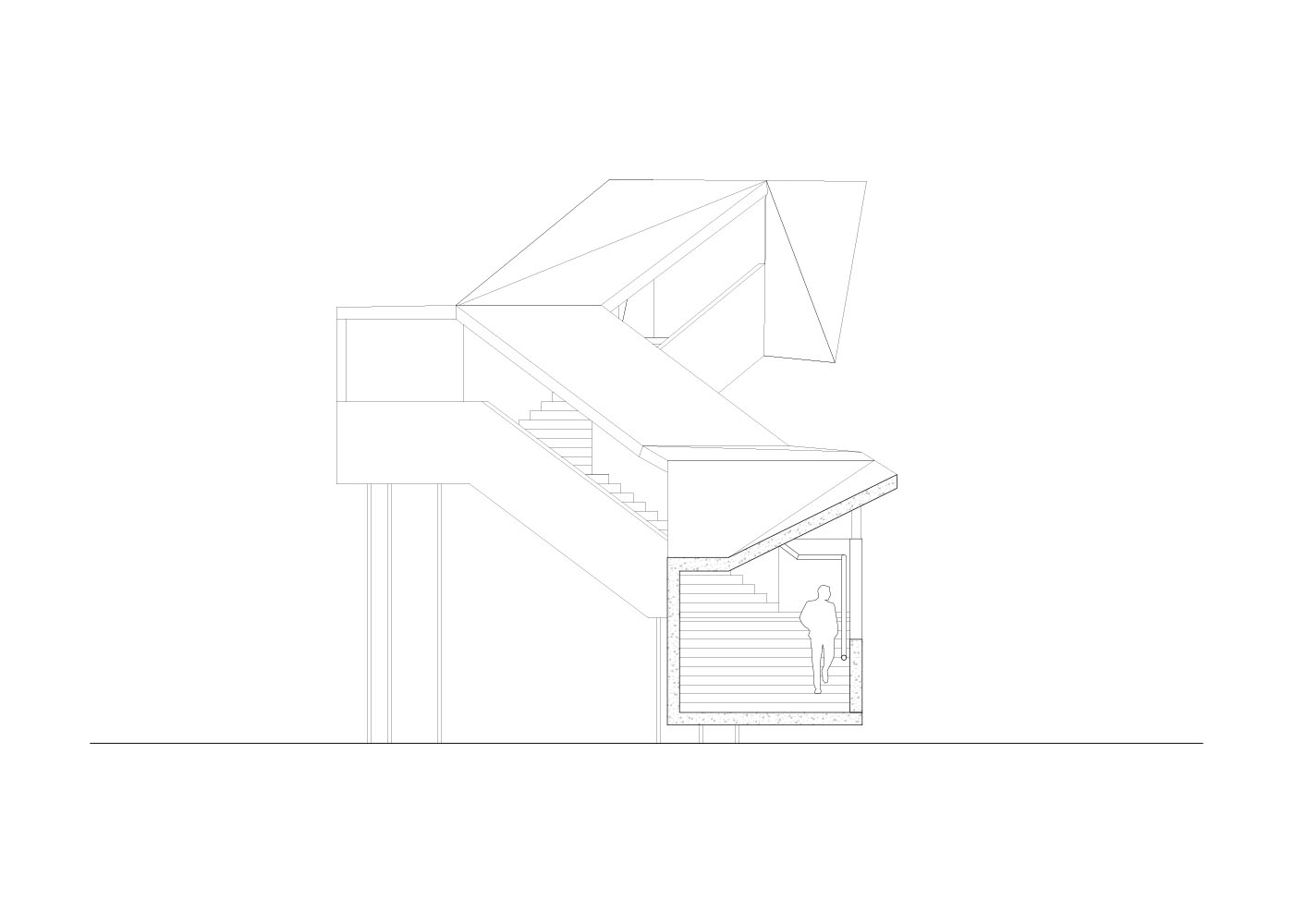-
Bridge as Swiss Army Knife
Brooker Bridge
Brooker Bridge is a new link over the main arterial road that enters Hobart from the north. The pedestrian and cycle bridge makes an east-west connection from the city to the Domain that has not been possible for decades given the scale of the Brooker Highway.
The unique form of the project resulted from complex programmatic requirements, demanding that the bridge operate like a “swiss army knife” – a tool that can satisfy multiple needs. In this case, the needs included multiple connections to the street and two buildings – before leaping across the highway to land in the grounds of the original University of Tasmania building.
In addressing multiple access questions and organised around key spatial criteria in response to the city, the new Brooker Bridge would have transcended its fundamental pragmatic role as a meaningful threshold and marker when entering the city from the north. Unfortunately, the design was executed by others without our involvement and falls short of the promise of this proposal.
- TYPE Urban Intervention
- LOCATION Hobart | AU
- YEAR 2016
APPROACH
The bridge was always drawn in the context of the larger set of circulation paths in and around this quarter of the city, dominated by parks, the Botanic Garden and Domain, all of which feature large level changes. This process insisted in understanding the bridge as a contributor to a larger project, and this power of the new connection is visible in these diagrams. Questions of connectivity were considered in parallel with the mapping of different views obtainable in crossing the bridge, resulting in a second layer of adjustments within the overall form to navigate both connectivity and visibility and view. This resulted in the crumpled form of the bridge above the highway.
